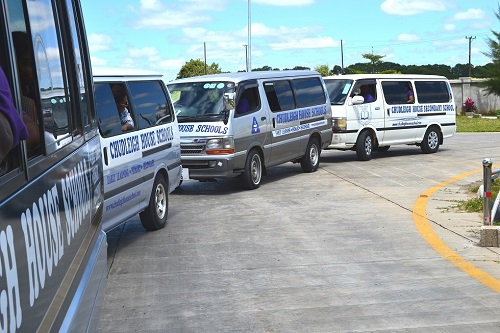Real Cost of Running a School Bus Service in Nigeria

A school bus service adds convenience, security, and prestige to any private school—but it comes at a significant cost. Many school owners underestimate what it truly takes to own, operate, and maintain a functional transport system. Let’s break down the real costs involved in running a school bus service in Nigeria.
Quick Insight: Owning a school bus goes beyond buying a vehicle—it’s a recurring investment in safety, operations, and compliance.
1. Initial Purchase of Buses
A brand-new 30–40 seater bus costs ₦25–₦40 million depending on the brand. Used buses are cheaper (₦8–₦15 million), but may come with hidden repair costs. Most schools need multiple buses to cover different routes.
2. Driver Salaries & Benefits
Hiring experienced, licensed drivers is critical. Monthly salary per driver ranges from ₦70,000 to ₦150,000. Some schools also provide health insurance, meals, or accommodation for their drivers and assistants.
3. Fuel & Maintenance Costs
With rising fuel prices, daily operations can be expensive. A single school bus may consume ₦10,000–₦20,000 in fuel per day depending on distance. Add monthly servicing, spare parts, tire replacements, and unexpected breakdowns.
4. Bus Assistants & Supervision
For safety, most buses require attendants to manage young children during the ride. Schools often hire assistants (₦30,000–₦60,000 monthly) who help with seat belts, discipline, and pickup/drop-off coordination.
5. Insurance & Licensing
Buses must be insured (comprehensive is ideal), and drivers must be properly licensed. Add annual vehicle licensing, VIO inspections, and regulatory compliance fees that could total ₦100,000–₦300,000 per year per vehicle.
6. Tracking & Safety Systems
Many premium schools install GPS trackers, dash cams, and CCTV to enhance security. These systems cost ₦100,000–₦250,000 per bus initially, plus yearly subscription and maintenance.
7. Branding & Maintenance of Image
Uniformed buses with clean, branded paint jobs create trust. Repainting and periodic bodywork may be required, costing ₦100,000–₦200,000 per bus annually to maintain aesthetics and public perception.
8. Administrative Oversight
Route planning, billing, maintenance scheduling, and communication with parents all require dedicated staff or tech tools. This adds hidden administrative and software subscription costs.
Final Thoughts
Running a school bus service is not a one-time expense—it’s a monthly operational cost that can run into millions annually. However, when managed well, it enhances school appeal, improves safety, and gives parents peace of mind. Schools must factor transport costs realistically into their school fees or offer it as an optional paid service.
Advice: Consider outsourcing transport to verified third-party services if maintaining a fleet becomes too costly or complex.
